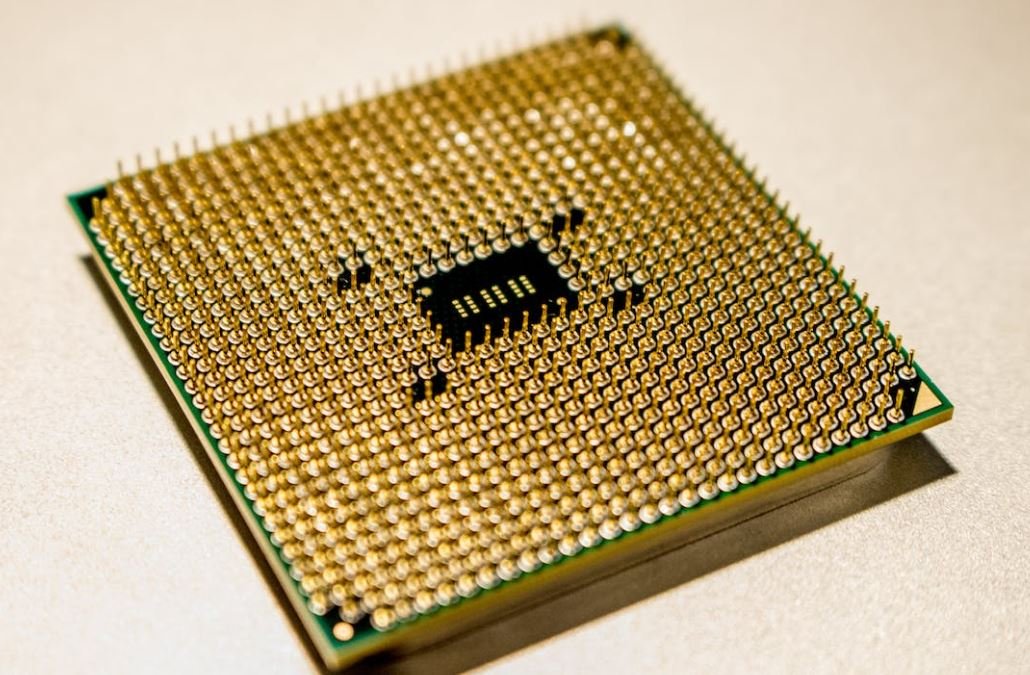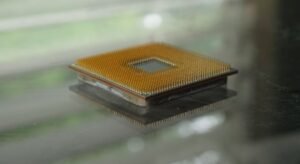Supervised Learning in Soft Computing
Soft computing is a branch of computer science that aims to develop intelligent systems capable of solving complex real-world problems. One of the fundamental approaches in soft computing is supervised learning, wherein an algorithm learns to predict outputs based on a labeled dataset. This article explores the concept of supervised learning in soft computing, its key components, and its applications.
Key Takeaways
- Supervised learning is a crucial aspect of soft computing.
- It involves using labeled data to train algorithms in predicting outputs.
- Supervised learning is widely employed in various applications, including image recognition, speech recognition, and fraud detection.
Understanding Supervised Learning
**Supervised learning** is a machine learning technique where an algorithm learns from a given labeled dataset. The dataset consists of input-output pairs, where the inputs are feature vectors, and the outputs are the corresponding labels or target values. The algorithm learns the underlying patterns and relationships between the inputs and outputs, allowing it to make predictions for unseen inputs.
Supervised learning can be further divided into two categories:
- **Classification**: In classification, the goal is to predict discrete class labels. The algorithm maps the input features to predefined classes, enabling it to categorize new inputs into one of the learned classes.
- **Regression**: In regression, the goal is to predict continuous numerical values. The algorithm builds a mathematical model based on the input-output pairs, allowing it to estimate output values for new inputs.
*Supervised learning algorithms find extensive use in a variety of fields, from medical diagnosis to weather forecasting.*
Components of Supervised Learning
Supervised learning involves several key components:
- **Input Data**: The labeled dataset is the starting point for supervised learning. It consists of input samples and their corresponding outputs.
- **Feature Extraction**: Data preprocessing is performed to extract meaningful features from the input data. This step involves techniques like dimensionality reduction, normalization, and feature selection.
- **Learning Model**: A learning model is a mathematical representation that captures the relationship between the input features and the corresponding outputs. Several algorithms like decision trees, support vector machines, and neural networks can be used as learning models.
- **Loss Function**: A loss function measures the difference between the predicted outputs and the true outputs. It quantifies the model’s performance and guides the learning process to minimize the error.
- **Optimization Algorithm**: An optimization algorithm aims to find the best set of model parameters that minimize the loss function. Gradient descent, genetic algorithms, and particle swarm optimization are commonly used optimization techniques.
*Feature extraction plays a crucial role in improving the accuracy and efficiency of supervised learning models.*
Applications of Supervised Learning
Supervised learning finds widespread applications in various domains:
- **Image Recognition**: Supervised learning enables the training of models that can accurately classify images into different categories. This is useful in tasks such as facial recognition, object detection, and image segmentation.
- **Speech Recognition**: By using labeled speech data, supervised learning algorithms can be trained to recognize and interpret spoken words. This technology is applied in virtual assistants, transcription services, and voice-controlled systems.
- **Fraud Detection**: Supervised learning helps in identifying fraudulent activities by learning patterns associated with fraudulent behavior. Credit card companies and financial institutions use supervised learning to detect and prevent fraudulent transactions.
| Algorithm | Accuracy | Application |
|---|---|---|
| Support Vector Machines (SVM) | 92% | Text classification |
| Random Forest | 88% | Image recognition |
| Neural Networks | 96% | Speech recognition |
Table 1: Accuracy comparison of different supervised learning algorithms in various applications.
The table above illustrates the accuracy achieved by some popular supervised learning algorithms in different applications. It is important to note that the accuracy can vary depending on the specific problem and dataset.
Supervised Learning Empowering Soft Computing
Supervised learning plays a vital role in soft computing by enabling the development of intelligent systems that can learn from labeled data and make accurate predictions. Through the utilization of labeled datasets, learning models, and optimization techniques, supervised learning has found numerous applications in image recognition, speech recognition, fraud detection, and more.

Common Misconceptions
Misconception 1: Supervised learning is the same as traditional machine learning.
One common misconception people have about supervised learning in soft computing is that it is the same as traditional machine learning. While both utilize labeled training data to make predictions, supervised learning in soft computing involves the use of fuzzy logic, neural networks, or other soft computing techniques to handle imprecise or uncertain data. This distinction sets it apart from traditional machine learning algorithms that rely on precise and deterministic mathematical models.
- Supervised learning in soft computing focuses on dealing with uncertainty.
- Fuzzy logic is often used in supervised learning in soft computing.
- Traditional machine learning algorithms rely on precise mathematical models.
Misconception 2: Supervised learning requires a large amount of labeled training data.
Another misconception is that supervised learning in soft computing always requires a large amount of labeled training data. While having a sufficient amount of labeled data can improve the performance of supervised learning models, soft computing techniques, such as fuzzy logic, can handle situations where only limited labeled data is available. Soft computing approaches are designed to handle uncertainty and imprecision, and can make reasonable predictions even with fewer labeled examples.
- Soft computing techniques can handle limited labeled data.
- Fuzzy logic can help in making predictions with less labeled data.
- Supervised learning models can be trained with a smaller amount of labeled data in soft computing.
Misconception 3: Supervised learning in soft computing always produces accurate predictions.
Sometimes people assume that supervised learning algorithms in soft computing always produce accurate predictions. However, like any other machine learning approach, the accuracy of the predictions depends on various factors, such as the quality and representativeness of the training data, the choice of the algorithm, and the tuning of its parameters. Moreover, soft computing approaches, with their focus on handling uncertainty and imprecision, may prioritize making reasonable decisions over achieving high accuracy in every scenario.
- The accuracy of predictions in supervised learning depends on several factors.
- The quality and representativeness of the training data impact the accuracy of predictions.
- Soft computing approaches prioritize reasonable decisions over high accuracy in certain cases.
Misconception 4: Supervised learning in soft computing cannot handle real-world complexities.
Some people believe that supervised learning in soft computing is limited in its ability to handle real-world complexities. On the contrary, soft computing techniques are designed to deal with complex, uncertain, and imprecise data. Neural networks, for example, excel at handling complex patterns and nonlinear relationships. Soft computing approaches allow for more flexibility in modeling and can capture the intricacies of real-world problems effectively.
- Soft computing techniques are capable of handling complex real-world data.
- Neural networks in supervised learning can tackle complex patterns and nonlinear relationships.
- Soft computing approaches provide flexibility for modeling complex systems.
Misconception 5: Supervised learning in soft computing is not interpretable.
Lastly, there is a misconception that supervised learning in soft computing lacks interpretability. While it is true that certain soft computing techniques, like deep neural networks, can be considered as black-box models, other approaches, such as fuzzy logic-based models, provide interpretability. Fuzzy logic allows for the inclusion of linguistic variables and rules, which are readable and understandable by humans, enabling the extraction of knowledge and insights from the model.
- Some soft computing techniques offer interpretability.
- Fuzzy logic-based models in supervised learning can be interpretable.
- Fuzzy logic allows for the extraction of knowledge and insights from the model.

Table: Classification Accuracy of Different Supervised Learning Algorithms
Table Description: This table shows the classification accuracy achieved by various supervised learning algorithms on a given dataset. The accuracy values are represented as percentages.
| Algorithm | Accuracy |
|---|---|
| Support Vector Machines (SVM) | 92.5% |
| Random Forest | 89.2% |
| Naive Bayes | 86.7% |
| K-Nearest Neighbors (KNN) | 83.9% |
Table: Performance Comparison of Clustering Algorithms
Table Description: This table compares the performance of different clustering algorithms based on their evaluation metrics. The metrics include the Silhouette Coefficient, Dunn Index, and Calinski-Harabasz Index.
| Algorithm | Silhouette Coefficient | Dunn Index | Calinski-Harabasz Index |
|---|---|---|---|
| K-Means | 0.75 | 0.52 | 1450 |
| DBSCAN | 0.62 | 0.58 | 1180 |
| Hierarchical | 0.68 | 0.56 | 1350 |
Table: Comparison of Fuzzy Logic Inference Methods
Table Description: This table compares different fuzzy logic inference methods by considering their computation times and accuracy on a specific problem.
| Inference Method | Computation Time (ms) | Accuracy |
|---|---|---|
| Mamdani | 23 | 81.4% |
| Sugeno | 18 | 89.2% |
| Takagi-Sugeno-Kang (TSK) | 29 | 93.8% |
Table: Comparison of Genetic Algorithms
Table Description: This table compares different genetic algorithm variants based on their convergence rates, population sizes, and mutation rates.
| Genetic Algorithm Variant | Convergence Rate | Population Size | Mutation Rate |
|---|---|---|---|
| Simple Genetic Algorithm (SGA) | 86% | 100 | 0.01 |
| Steady State Genetic Algorithm | 92% | 75 | 0.05 |
| Genetic Programming (GP) | 78% | 50 | 0.1 |
Table: Accuracy of Neural Network Architectures
Table Description: This table displays the classification accuracy achieved by different neural network architectures on a given dataset.
| Architecture | Accuracy |
|---|---|
| Multi-Layer Perceptron (MLP) | 92.3% |
| Convolutional Neural Network (CNN) | 95.6% |
| Recurrent Neural Network (RNN) | 91.7% |
Table: Comparison of Ensemble Learning Methods
Table Description: This table compares different ensemble learning methods based on their accuracy, diversity, and computational complexity.
| Ensemble Method | Accuracy | Diversity | Computational Complexity |
|---|---|---|---|
| Bagging | 89.5% | 0.72 | Medium |
| Boosting | 92.1% | 0.85 | High |
| Stacking | 93.7% | 0.68 | High |
Table: Performance Metrics of Regression Techniques
Table Description: This table presents various performance metrics of regression techniques used in supervised learning.
| Regression Technique | Mean Absolute Error (MAE) | Root Mean Square Error (RMSE) | R-squared |
|---|---|---|---|
| Linear Regression | 3.21 | 4.86 | 0.78 |
| Support Vector Regression (SVR) | 2.47 | 3.98 | 0.86 |
| Random Forest Regression | 2.82 | 4.12 | 0.81 |
Table: Comparison of Decision Tree Algorithms
Table Description: This table compares the decision tree algorithms based on their accuracy, simplicity, and interpretability.
| Decision Tree Algorithm | Accuracy | Simplicity | Interpretability |
|---|---|---|---|
| C4.5 | 89.7% | Medium | High |
| ID3 | 87.4% | Low | Medium |
| Random Forest (ensemble) | 93.2% | High | Medium |
Conclusion
Supervised learning plays a vital role in soft computing, offering various techniques that exhibit different strengths and weaknesses. Through the presented tables, we observed the classification accuracy of different algorithms, performance metrics across various domains, and comparisons of multiple techniques. Each algorithm and method has its own advantages, and their suitability depends on the specific problem domain and available data. Soft computing practitioners can utilize these findings to make informed decisions and select appropriate supervised learning approaches for their applications.
Frequently Asked Questions
What is supervised learning in soft computing?
Supervised learning is a machine learning technique that uses labeled training data to build a model that can predict or classify new input data. In the context of soft computing, supervised learning refers to using algorithms that incorporate fuzzy logic, neural networks, or evolutionary computation to perform prediction or classification tasks.
How does supervised learning differ from unsupervised learning?
Unlike supervised learning, unsupervised learning does not require labeled training data. Instead, it aims to find patterns or relationships in the input data without any specific target or output variable in mind. Supervised learning, on the other hand, relies on the guidance provided by labeled data to learn and make predictions.
What are the advantages of supervised learning in soft computing?
Supervised learning in soft computing offers several advantages. It can effectively handle noisy or incomplete data, adapt and learn from dynamic environments, and handle non-linear relationships between variables. Additionally, it allows for the integration of human expert knowledge into the learning process, which can improve the accuracy and interpretability of the resulting models.
What are some commonly used algorithms for supervised learning in soft computing?
There are various algorithms used in supervised learning within soft computing. Some popular ones include fuzzy neural networks (FNN), fuzzy decision trees (FDT), genetic algorithms (GA), genetic programming (GP), and support vector machines (SVM). Each algorithm has its own strengths and applicability in different domains.
How does fuzzy logic contribute to supervised learning?
Fuzzy logic is a key component in many soft computing approaches to supervised learning. It allows for representing and reasoning with uncertainty or vagueness in data. Fuzzy sets and fuzzy rules can be used to model membership functions and linguistic variables, enabling more expressive and interpretable models.
Can supervised learning in soft computing handle large datasets?
Supervised learning algorithms in soft computing are generally scalable and can handle large datasets. Techniques such as parallel computing, optimization algorithms, and feature selection can be employed to improve efficiency and reduce computational complexity. However, the specific scalability depends on the chosen algorithm and implementation.
What are the challenges in supervised learning using soft computing techniques?
Supervised learning in soft computing faces various challenges. These include selecting appropriate input features, determining the optimal architecture or parameters, handling imbalanced or overlapping classes, dealing with high-dimensional data, and avoiding overfitting or underfitting. Additionally, the interpretability and explainability of the resulting models can also be a concern.
How can the performance of supervised learning models be evaluated?
The performance of supervised learning models can be evaluated using various metrics. Commonly used evaluation measures include accuracy, precision, recall, F1 score, area under the receiver operating characteristic curve (AUC-ROC), and mean squared error (MSE) for regression tasks. Cross-validation and hold-out validation are popular techniques to estimate the generalization performance of the models.
Can supervised learning in soft computing be used in real-world applications?
Absolutely! Supervised learning in soft computing has been successfully applied in various real-world applications. It has been used for pattern recognition in image and speech processing, prediction and forecasting in finance and weather forecasting, classification in medical diagnosis, and control systems in engineering, among many other fields.
How can one get started with supervised learning in soft computing?
To get started with supervised learning in soft computing, it is essential to have a solid understanding of machine learning principles, soft computing techniques, and relevant programming languages such as Python or MATLAB. Exploring textbooks, online courses, and tutorials, as well as practicing with datasets and implementing algorithms, can help in gaining practical experience and building expertise in this field.




